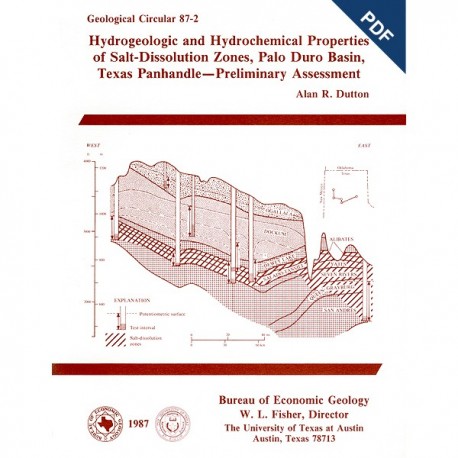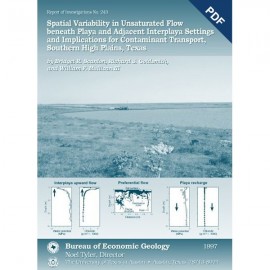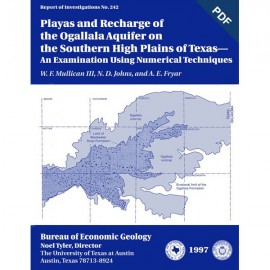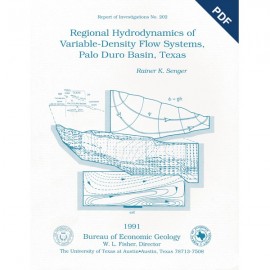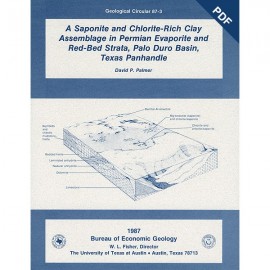Geological Circulars
-
Books & Reports
- Reports of Investigations
- Guidebooks
- Udden Series
- Geological Circulars
- Down To Earth
- Atlases of Major Oil and Gas Reservoirs
- Texas Memorial Museum Publications
- Environmental Geologic Atlas of the Texas Coastal Zone
- Mineral Resource Circulars
- Other Reports
- Seminars and Workshops
- Handbooks
- Submerged Lands of Texas
- Symposia
- Annual Reports
- Open File Reports
-
Maps & Cross Sections
- Thematic Maps
- Miscellaneous Maps, Charts & Sections
- Geologic Atlas of Texas
- STATEMAP Project Maps
- Geologic Quadrangle Maps
- Cross Sections
- Highway Geology Map
- Energy and Mineral Resource Maps
- Shoreline Change and Other Posters
- Wilcox Group, East Texas, Geological / Hydrological Folios
- Bouguer Gravity Atlas of Texas
- River Basin Regional Studies
- Featured Maps
- Posters
- Teachers & the Public
-
Geological Society Publications
- Gulf Coast Association of Geological Societies
- Alabama Geological Society
- Austin Geological Society
- Corpus Christi Geological Society
- Houston Geological Society
- Lafayette Geological Society
- Mississippi Geological Society
- New Orleans Geological Society
- South Texas Geological Society
- GCS SEPM Publications
- Historic BEG & UT Series
Hydrogeologic and Hydrochemical Properties of Salt-Dissolution Zones, Palo Duro Basin... Digital Download
GC8702D
For a print version: GC8702.
GC8702D. Hydrogeologic and Hydrochemical Properties of Salt-Dissolution Zones, Palo Duro Basin, Texas Panhandle: Preliminary Assessment, by A. R. Dutton. 32 p., 16 figs., 6 tables, 1 appendix, 1987. doi.org/10.23687/gc8702D. Downloadable PDF.
To purchase this publication in book format, please order GC8702.
ABSTRACT
Ground water that moves downward from aquifers in clastic rocks of the Triassic Dockum Group and Neogene Ogallala Formation dissolves bedded halite and anhydrite in the Upper Permian evaporite section along the perimeter of the Southern High Plains in the Texas Panhandle. Ground-water velocity in salt-dissolution zones beneath the Canadian River valley and Rolling Plains may be greater than ground-water velocity in salt-dissolution zones beneath the Southern High Plains because of greater hydraulic conductivity and greater hydraulic-head gradient. Hydraulic conductivities measured at two test wells in salt-dissolution zones beneath the Canadian River valley and Rolling Plains are 0.7 and 1.6 ft/d (0.2 to 0.5 m/d), much larger than hydraulic conductivities of 2 × l0-4 to 0.03 ft/d (6 × 10-5 to 0.007 m/d) measured at another test well in salt-dissolution zones beneath the Southern High Plains. Inferred differences in flow rate correspond to differences in salinity and probably account for some variation in halite dissolution rate. The Na-Cl ground waters in salt-dissolution zones beneath the Rolling Plains and Canadian River valley are probably no older than 16,200 and 23,500 yr, respectively. Salinity of this ground water 33 to 46 ft (10.1 to 14.0 m) above the uppermost halite beds ranges from 68,000 to 95,000 mg/ L; the water is undersaturated with respect to halite but saturated with respect to gypsum. Age of ground water in salt-dissolution zones beneath the northern part of the Southern High Plains has not been determined. Salinity of ground water there is 288,000 mg/ L because of dissolution of evaporite minerals; organic-acid anions, not dissolved bicarbonate, account for alkalinity. Additional wells in the salt-dissolution zones and further hydrologic testing and geochemical sampling are needed to completely evaluate the timing and rate of salt dissolution in the northern part of the Southern High Plains.
Keywords: ground-water composition, hydrogeology, paleohydrology, Palo Duro Basin, Permian evaporites, salt water, solution phenomena, Texas Panhandle
Citation
Dutton, A. R., 1987, Hydrogeologic and Hydrochemical Properties of Salt-Dissolution Zones, Palo Duro Basin, Texas Panhandle: Preliminary Assessment: The University of Texas at Austin, Bureau of Economic Geology, Geological Circular 87-2, 32 p. doi.org/10.23867/gc8702D.
